Are we in a copycat craze?
The difference between taking inspiration and creating an iteration
Call it frequency illusion but copycats have been on my mind for a month. Once I started dwelling on it, I couldn’t go a day without seeing a rip off, so I’m calling it a craze.
Copying is constant, in all realms of culture, but when does referencing turn into plagiarising? The creative industries are built on consistent lack of credit - ideas lifted and reapplied, or worse, misapplied - across all sorts of concepts, all over the world of taste.
At what point (size of audience, level of fame, amount of funds) does a brand have enough credibility to call something their own, and show no concern for the originator of the idea/design/concept that’s being ripped off?
I don’t have the answer, but I do know that we need to speak more on the topic.

Two Fridays ago, British Vogue published a profile of Slutty Cheff interviewed by Marina O’Loughlin. This was Marina’s first piece for British Vogue and when I saw it, I had that heart-sinking sense that comes from feeling like your work has been replicated, and not being able to do much about it.
In December last year, I commissioned Slutty and Marina to chat about food writing and anonymity for Gemma Bell & Company’s annual In Service report. Over lunch at Cafe Deco they met for the first time, I recorded the ensuing conversation and edited it into a beautiful bit of back and forth. It felt timely given Marina’s recent face reveal and Slutty’s book announcement, and it was a novel pairing of two food writers in conversation.
The interview was published and shared around the industry in January, so seeing an all-too-similar piece come out in British Vogue in June, disappointed me. Although I was touched to see the pairing repeated, and thrilled for Marina - a writer who I’ve admired for years - getting a British Vogue byline, knowing the inner workings of the press, I’m convinced British Vogue wouldn’t have asked Marina to write this profile had it not been for In Service.
I found myself asking, do I have a right to feel stung? Are my standards too high? How might I have liked to see the original piece credited? I had no concrete answers, but as the subject of copycatting was already on my mind, I felt empowered to say something about this lack of originality.
I posted to my Stories the day the piece came out and I’m very glad I did, because ever since - almost every day for two weeks - I’ve seen another person call out their creative output being copied, or been sent examples of copycat behaviour.
At the beginning of June,
published a piece on Creative Integrity, Accountability and Standing Up For Yourself. I’ve long admired Juliana’s work and the way she shares her references and personality, principles and preferences online. Her essay talks about her interaction with the brand Dorsey who ripped off one of her designs, what she’s learnt from being copied many times (flattery is a manipulative tactic to avoid accountability) and the importance of always saying something.Reading Juliana’s piece, reignited my thinking around plagiarism and the reference epidemic we currently live in, with brands archive sweeping and pinching ideas from all over the world wide web. I was reminded of what
wrote in February, Reference Board Final Bosses and The Irony Epidemic, which proves just how many layers of reference exist in pop culture today, how much is borrowed, how little is ~brand new~ and how hard it is to be brave in your singularity.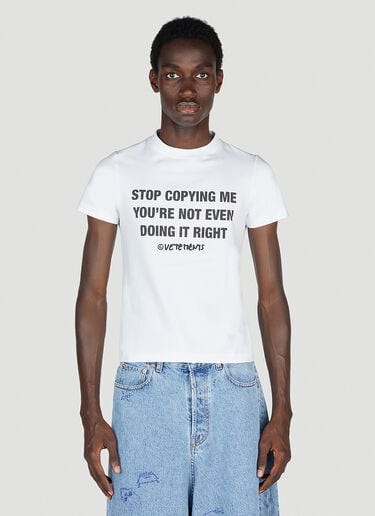
It requires a huge amount of guts to be an independent thought-leader, an honest and singular creative. You have to be okay with putting things out there in all their messiness, in an unfinished form, and live your complete truth.
I went to see the Leigh Bowery exhibition at the Tate Modern on Saturday, and though his work was problematic in places, no one can argue that Leigh wasn’t wholeheartedly unique, pushing creative boundaries everyday: in his personality, his designs and his artistic eye. He embodied an alternative way of being in everything that he touched. Like everyone, he had his inspirations and his creative collaborators - which he made reference to often - but he still always remained distinct.
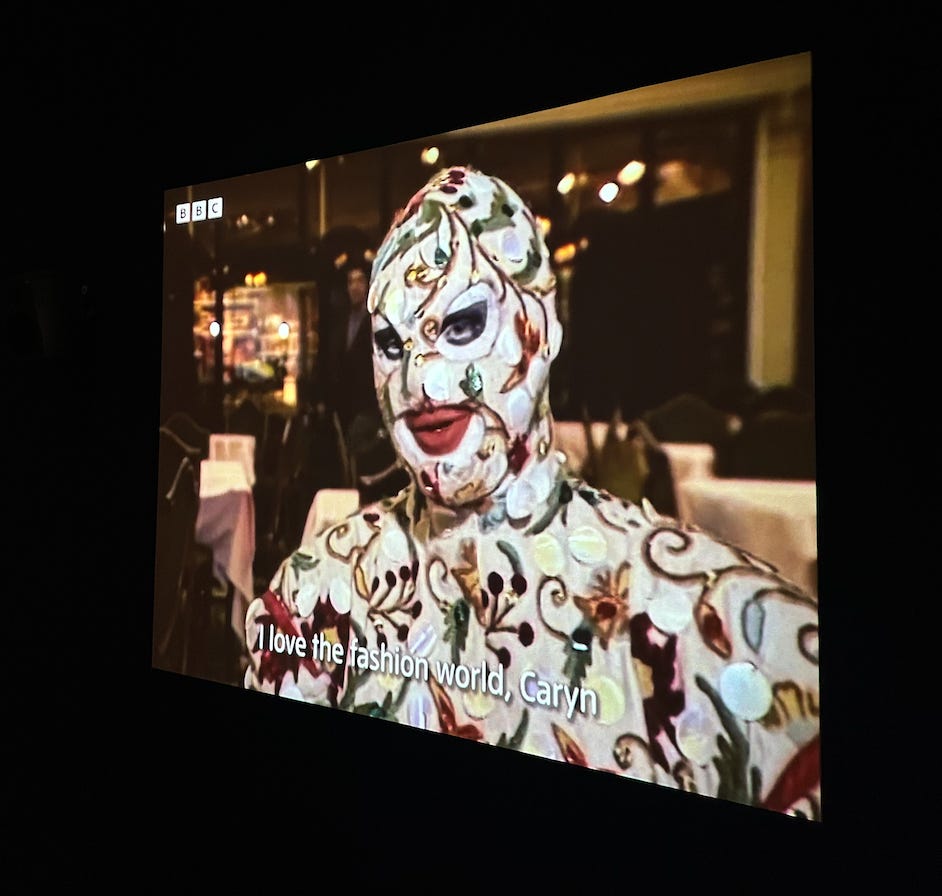
We all borrow, in the smallest and largest of ways, every single day. Algorithms are set up to facilitate and encourage it, and we’re constantly “influenced” by others - whether from their writing or reels - about how to live our lives. However much we try to avoid it, we’re endlessly inspired by other things. The smartest of creatives will go beyond their field, into new zones of interest or deep into nature, to find material outside their regular references, while the greatest innovators are often those with the greatest commitment to hobbies that have nothing to do with their work.
So, if we’re all constantly referencing, what is it that turns inspiration into imitation?
In today’s world there’s too much comfort - and clout - in following suit, replicating that which has come before, that which is popular, that which is sanctioned as “cool”. In our picture-first world, you no longer need to have your own voice, you can simply adhere to a visual direction to prove what you stand for.
And why bother trying to be different?
Last month, Emilia Petrarca published Dissecting the "West Village Girl" Uniform, following Brock Colyar’s New York magazine feature. These West Village girls dress the same for a sense of community. For them, being part of a unit, makes them feel part of something bigger. So in this case, copying is no longer understood as a creative issue, but as a critical community identifier. And our garments do the work for us.
Accessories in particular, are a way of immediately joining an aesthetic, and replicas offer a short cut to an aspirational lifestyle. In May, Recho Omondi interviewed Steve Madden on The Cutting Room Floor and they played a game, going through his brand’s trendiest shoes to see if he knew whose designs he had ripped off. I recommend watching. “Do you think some of my girls even know who Alaïa is?” – Steve sees zero issues with the “odd little shoe nicked here and there”.
Maybe it doesn’t count if you’re ripping off the big dogs.
Now for a couple of hot examples of copycatting that were shared with me recently.
1. Sam Harris vs P. Johnson
Sam Harris has long photographed for St. JOHN, playing a pivotal role in cultivating the brand’s playfulness on camera. The first image, shot by Sam, is from 2019 with the co-founders of St. JOHN, Trevor Gulliver and Fergus Henderson. On the right, a campaign image by P. Johnson (a tailor), posted last week, shows the humourous pose replicated almost exactly, even featuring a tweed jacket and a chore jacket, albeit with younger models.
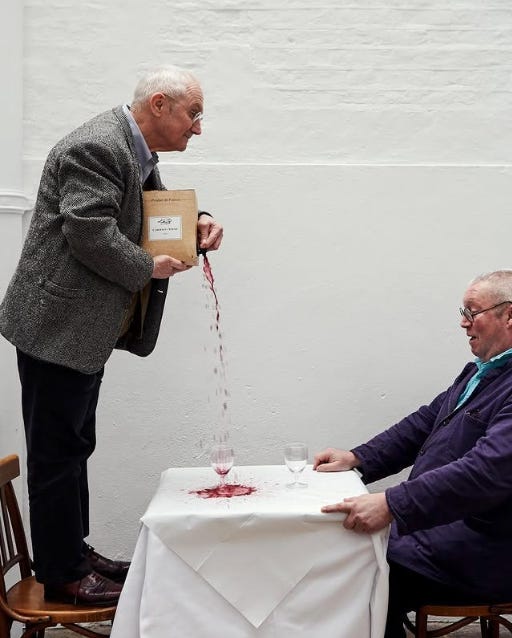
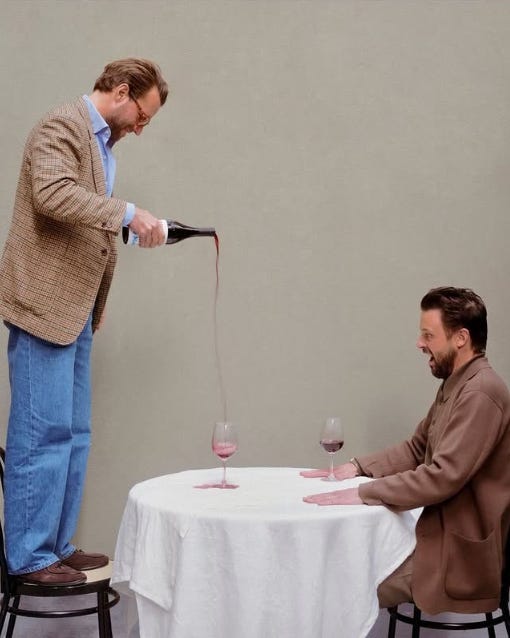
It’s a smart and engaging move from the tailor, but it’s also plagiarism. Sam commented on P. Johnson’s post and messaged the team, who in turn apologised profusely and removed the image. Did they back down because Sam and St. JOHN both have a large and loyal following? Why didn’t they give credit to the original reference in the caption (and reimburse Sam accordingly) to widen their audience’s pool of knowledge too?
Sam is satisfied with how P. Johnson handled the situation however, and that’s what counts.
2. Kitty Coles vs her fangirls
Is this what happens when you spawn a thousand disciples? Kitty Coles’ cooking has a distinct feel, which is mirrored by many seasonally-driven, veg-forward people cooking on Instagram, who cook and plate in a way that imitates her casual, Balearic style.
For Kitty, cooking has been instinctive since childhood, so it made sense that she’d go on to become a successful food stylist and writer. Spending a lot of time in Mallorca, Kitty has a knack for envy inducing, easy breezy Med-side cooking. She makes real food that she wants to eat, takes a quick snap, and it looks excellent. It’s a naturally honed talent.
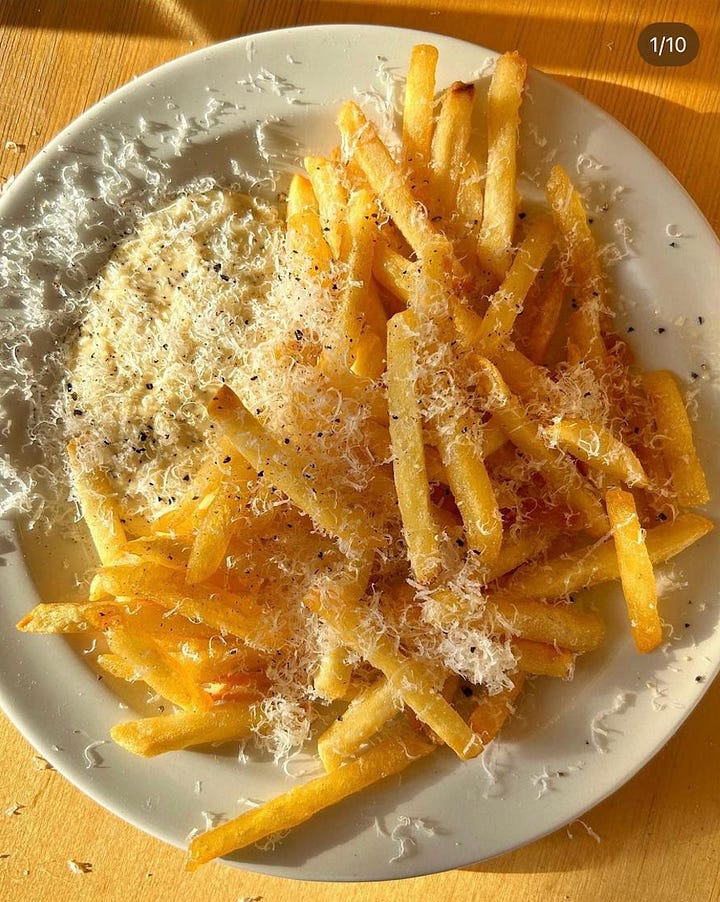
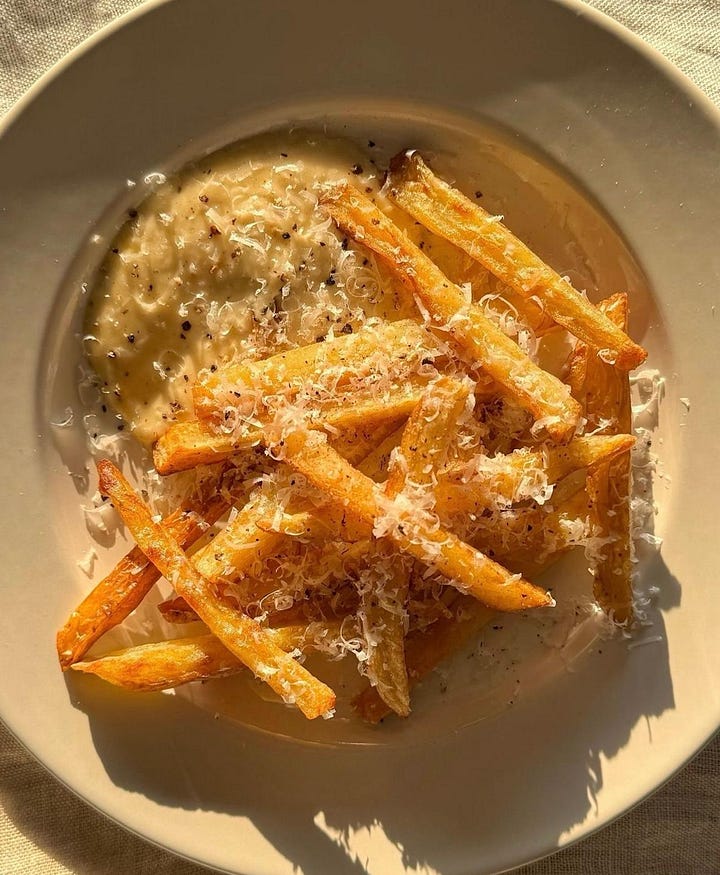
But that doesn’t stop others from painstakingly replicating her work. From the mix of ingredients, down to the way the plate is lit, the copying is uncanny, often without making any reference to Kitty as the originator.


There have been several other outrageous examples of copycatting shared - e.g. copy-paste illustrations of Lamiri Harissa’s t-shirt design and
’s book design - and there are countless more out there in the wild.As with most injustices, just because it’s normalised, it doesn’t mean we have to accept it. Never stay silent if your idea has been borrowed, especially if someone else is making money from it. Always share the truth, so that someone, somewhere, can learn where an idea originally came from. And, if you do borrow something - which we all do - share who inspired you, whenever you can.
Lest we ever forget, the full Oscar Wilde quote goes as follows: Imitation is the sincerest form of flattery that mediocrity can pay to greatness. We sure don’t want to be mediocre, and flattery isn’t the same as cold hard credit.
Comment or reply if you have any copycat qualms to share.



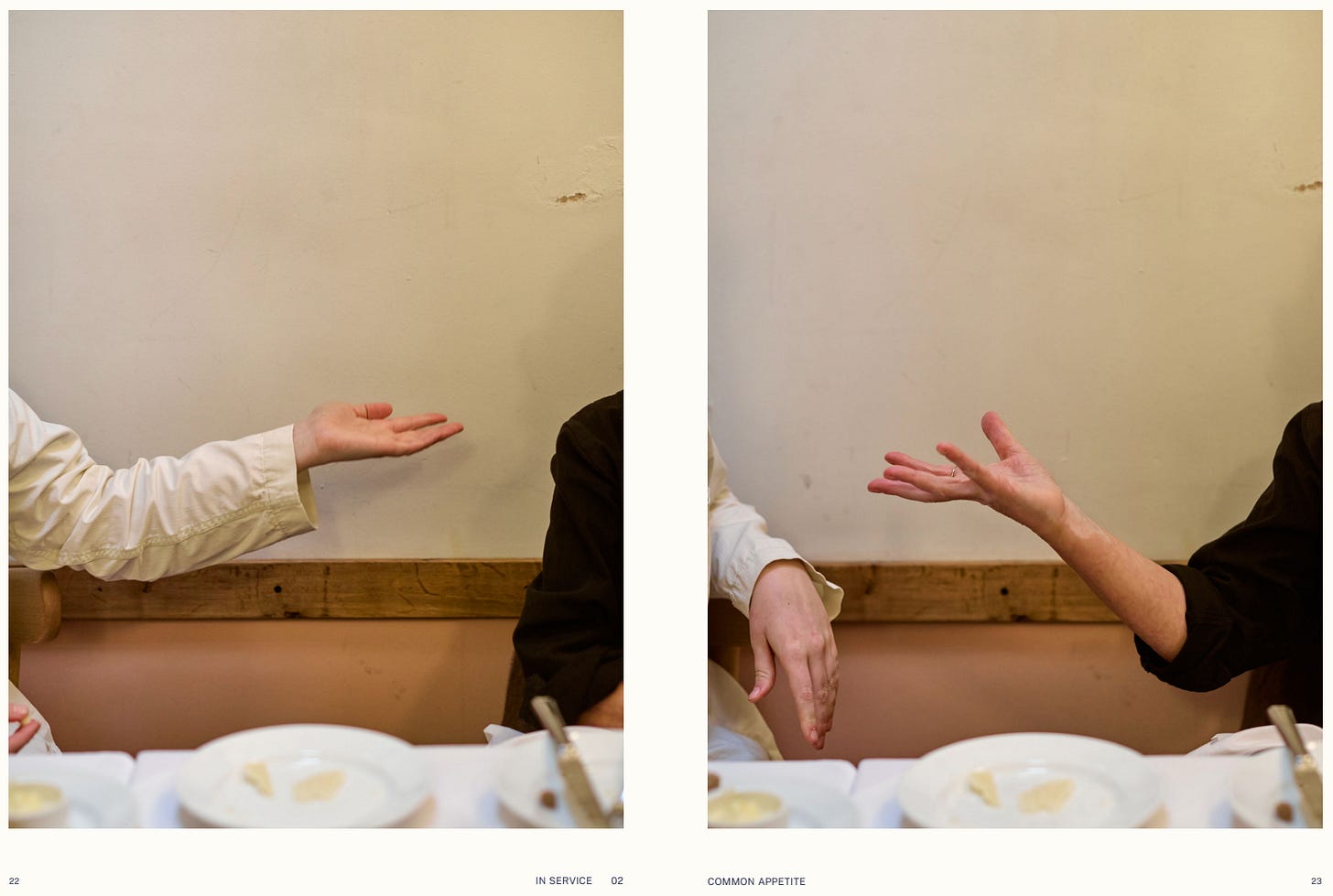


You’ve articulated this so well. A thing that particularly irks me is when recipe developers come up with recipes that are clearly from a specific cuisine, different from their own, and don’t mention their source/inspiration for the recipe. It happens ALL the time in Indian food media. Where is your tried and tested Korean fried chicken recipe from? Surely not learned at your grandmother’s elbow!
Beautifully written and illustrated 👏